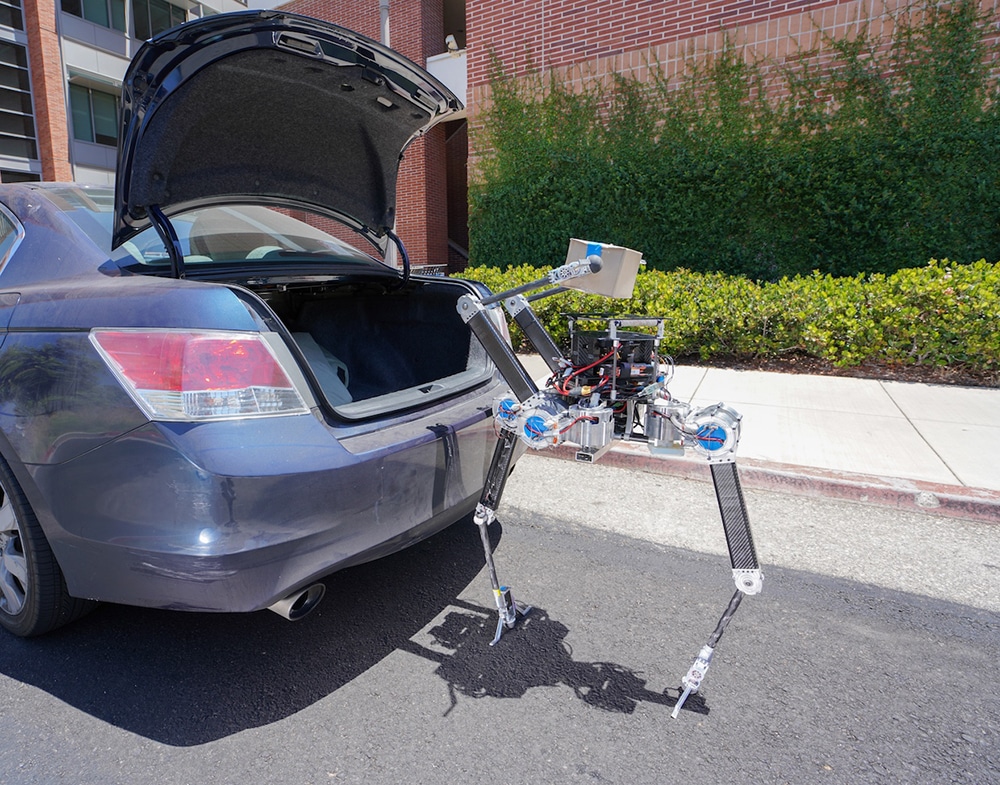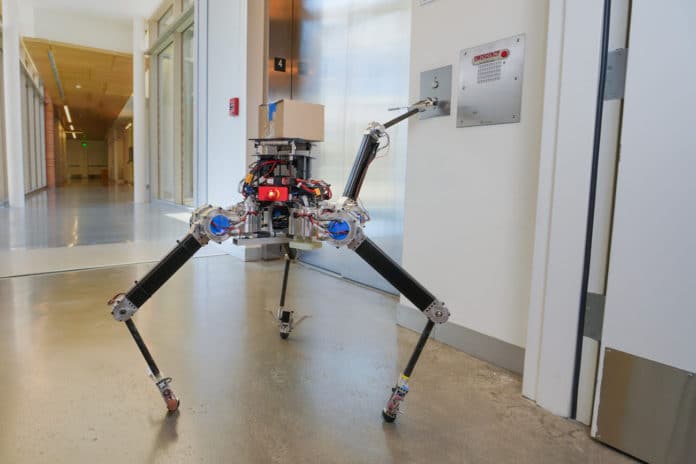Most four-legged robots have a similar design; their legs consists of two segments. Besides, these legs usually can bend only in one direction, which greatly limits their capabilities. On the other hand, the legs are adapted to bend only to a specific side.
Now, engineers at the University of California at Berkeley presented the four-legged ALPHRED 2 robot with an unusual design for such robots. It is actually a redesigned version of RoMeLa’s original ALPHRED robots that can walk, run, hop, and jump, as well as manipulate, carry objects, and much more.
Interestingly, the robot’s legs can bend in both the directions, as well as rotate one in relation to other, which allows, for instance, to use two legs to stand still, and two more to move small objects.

It has four identical legs fixed in vertical motorized loops. Each leg has three segments, and small folding sections are installed at the end of each. They can rotate and move synchronously or individually, depending on the tasks.
ALPHRED 2 robot knows how to balance on two legs: the design features allow it to stand in this position and not fall sideways. A three tripedal walking, with three legs and one arm, is more stable and allows the robot to do things like push buttons, open doors, and more.
Thanks to the curve, the robot can also change its height. Additionally, it is equipped with passive wheels under its body, which help the robot to use its limbs to quickly and efficiently skate around.
ALPHRED 2 can reach stable speeds of up to 1.5 m/s. It has actuators on each foot that RoMeLa designed specifically for dynamic legged locomotion. These are optionally liquid-cooled motors capable of proprioceptive sensing, consisting of a DC motor, a single-stage 10:1 planetary gearbox, and channels through the back of the housing that coolant can be pumped through.
The actuators have a peak torque of 32 Nm, and a continuous torque of about 8 Nm with passive air cooling. And the liquid cooling allows the continuous torque of about 21 Nm, according to IEEE Spectrum.
Watch the ALPHRED 2 robot in action the video given above. With the recent interest in highly dynamic robots, we can’t wait to see what kinds of exciting tricks the next version will be able to do.
